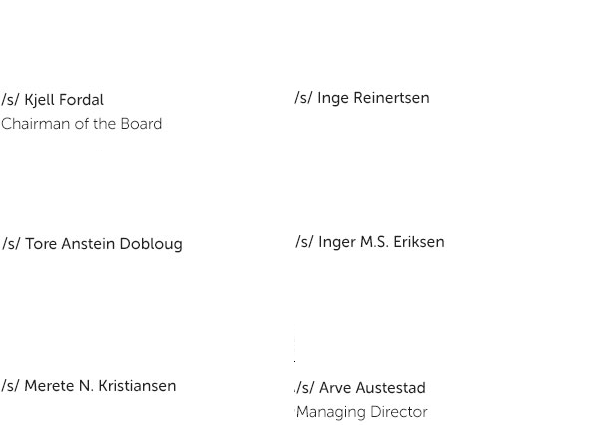Boligkreditt 2nd Quarterly Report 2016
Statement of the board of directors
Cover pool and outstanding covered bonds 1
1 The cover pool consists of residential mortgages and liquid, highly rated assets (substitute assets). Covered bonds are shown inclusive of the market value of the derivatives deployed to hedge currencies and interest rates.
Key figures
| Q2 2016 | Q1 2016 | Q4 2015 | Q3 2015 | |
|---|---|---|---|---|
| Weighted Average Current LTV (%) | 49.9 % | 51.4 % | 52.1 % | 50.3 % |
| Weighted Average Original LTV (%) | 58.7 % | 58.7 % | 58.7 % | 58.3 % |
| Average Loan Balance (NOK) | 1,286,759 | 1,272,036 | 1,251,680 | 1,221,414 |
| Number of Mortgages in Pool | 133,840 | 135,432 | 134,895 | 135,688 |
| Percentage of non first-lien mortgages | 0.0 % | 0.0 % | 0.0 % | 0.0 % |
| Overcollateralization | 109.0 % | 108.6 % | 110.4 % | 111.2 % |
Key developments in the period
Boligkreditt issued no additional debt internationally during the 2nd quarter of 2016, with the exception of a smaller volume of privately placed EUR denominated covered bonds.
In the Norwegian market however, issuance activity was relatively strong with NOK 8.2 billion issued mostly in 5 and 6 years, but also up to 12 years maturity. Norwegian 2nd quarter market activity also included the issuance of NOK 250 million of additional Tier 1 capital. In addition the Company increased its equity by NOK 240 million in June.
Total capital coverage is 16.5 per cent as of June 30, 2016, Tier 1 capital coverage is 14.3 per cent and core capital coverage 12.9 per cent. The Company's capital coverage target is to be above the minimum legal requirement, which is 15 per cent total capital from July 1, 2016. The capitalization ratios are currently positively impacted by the accounting for basis swaps which will reverse over time.
Nature and development of the Company’s business
SpareBank 1 Boligkreditt AS is a credit institution licensed by the Norwegian Financial Services Authority (Finanstilsynet) and is operated according to the legislation for covered bond issuers in Norway which is enshrined in the law regarding financial undertakings("Finansforetaksloven") chapter 11, section II and the detailed regulations thereof.
We expect that the Norwegian Treasury Department will set a minimum overcollateralization level of 2 per cent for covered bond pools in the law’s associated regulations.
The purpose of the Company is to provide funding for the owners by buying residential mortgage loans with a loan-to-value (“LTV”) of up to 75 per cent and financing these primarily through the issuance of covered bonds2. The Company, which is based in Stavanger, is owned by banks which are members of the SpareBank 1 Alliance. An agreement is signed with each owner bank regarding the purchase and transfer of residential mortgages and the services which the owner banks owe to the Company and the Company's customers in this regard ("Transfer and Servicing Agreement").
The Company’s issuances of covered bonds take place under the EUR 25,000,000,000 Global Medium Term Covered Note Programme (GMTCN Programme). The Programme was last updated on June 10, 2016 and is available on the homepage: https://spabol.sparebank1.no.
One or more credit ratings from international rating agencies are important in order to be able to issue covered bonds. The Company have procured the services of Moody’s Ratings Service and Fitch Ratings to evaluate the credit quality of the issuances under the GMTCN Programme. The bond ratings are Aaa from Moody’s and AAA from Fitch.
2 New self-selected criteria for which loans qualify for the cover pool from the first quarter 2014 sets the limit at 70% LTV.
Accounts for the period
The quarterly accounts have been prepared in accordance with the International Reporting Standards (IFRS) as adopted by the EU and published by the International Reporting Standards Board (IASB).
The Board views the accounts as presented to be a true representation of SpareBank 1 Boligkreditt’s operations and financial position at the end of the first quarter 2016 (corresponding previous year in brackets).
The total balance sheet amounts to NOK 263 (218) billion. Lending to customers amounted to NOK 173 (161) billion as of 30.06.2016. Loan growth is in accordance with expectations. The Company's liquid assets as of June 30, 2016 amounted to NOK 58 (29) billion, whereof approximately NOK 32 billion are funds received as collateral under ISDA agreements and the remainder is available to the Company as liquid assets.
The Company had during the first six months net interest income of NOK 220 (199) million, including commissions earned by the ownership banks and accrued as an expense to SpareBank 1 Boligkreditt. The cost of operations for the first six months was NOK 15.6 (15.3) million including amortisation and depreciation. No additional amounts have been charged as loan provisions (write offs) during the first half of 2016, in addition to the NOK 8 million in cumulative group loan loss provisions as of 31.12.15. No actual loan losses have occurred. The pre-tax result was NOK 126 (391) million. The difference in pre-tax result compared to the same period last year is mostly due to valuation changes of basis swaps, which increased by NOK 53 million during the first six months of 2016 (please see note 3 and the annual report for 2015 for further details).
Risk aspects
SpareBank 1 Boligkreditt as an issuer of covered bonds is subject to strict rules regarding its exposure to credit, market, and liquidity risks.
This fact, and the aim of the maintenance of the AAA/Aaa rating, means that the Company is subject to low levels of risk and places strong emphasis on risk control.
Credit risk is defined as the risk that losses can occur as a consequence of that customers and others do not have the ability or willingness to meet their obligations to SpareBank 1 Boligkreditt. The portfolio, which consists of mortgages up to 75 per cent LTV, is the reason for why the Board of Directors assess the credit risk to be lower compared to other, universal and deposit taking banks 3.
Market risk is defined as the risk of losses due to changes in market rates, i.e. interest rates, exchange rates and the prices of financial instruments. At the end of the quarter SpareBank 1 Boligkreditt AS had covered bonds outstanding of NOK 185 billion at original (hedged) exchange rates, of which NOK bonds were approximately 55 billion and the remainder mainly in EUR and USD. All borrowing and investments with a fixed coupon and all borrowing and investments denominated in foreign currency are hedged by financial currency/and or interest rate swaps or through natural hedges, in order to convert the effective cash flow on this this debt to a NOK floating rate (3 months NIBOR). The Company receives collateral under the derivatives contracts from its counterparties subject to certain thresholds.
SpareBank 1 Boligkreditt AS records cash, bonds and treasury bills at the end of the period for a total of NOK 57 billion, whereby NOK 32 billion thereof is collateral received from counterparties in swap transactions and is not available as general liquidity. The bonds are Nordic covered bonds, Norwegian government debt and German SSA paper with a triple-A rating from Fitch, Moody's or S&P. Deposits are placed in banks with a minimum rating of at least A/A2.
The Company had as of 30.06.2016 only moderate interest rate risk and immaterial amounts of currency risk.
Liquidity risk is defined as the risk that the Company is not able to meet its obligations at maturity or to be able to finance the purchase of loans at normal terms and conditions.
Liquidity risk is managed based upon a liquidity strategy approved by the Board. According to the strategy, SpareBank 1 Boligkreditt AS shall maintain a material liquidity reserve with a minimum size of covering all maturities within 6 months, and 50 per cent of all maturities between 6 and 12 months. Additionally the Company shall at any point in time be able to meet its interest payments, including derivatives, which come due in the next three months under a scenario where no interest payments are received from the loan portfolio. SpareBank 1 Boligkreditt AS’s liquidity situation is considered to be good.
Operational risk is defined as risk of loss due to error or neglect in transaction execution, weakness in the internal control or information technology systems operational breakdowns. Reputational, legal, ethical and competency risks are also elements of operational risk. This risk is considered to be moderate.
The Company is focused on identifying, measuring and managing central areas of risk which contributes to that Boligkreditt achieves its strategic goals. Reference is made to the annual report 2015 for more information on this.
3 Eligibility criteria for the sale of mortgage loans to Boligkreditt include a maximum 70% LTV from the end of the first quarter 2014.
Future prospects of the Company
The Company has a portfolio of residential mortgage lending with an average loan to value of approximately 50 per cent and no loans are in default.
Residential real estate prices have increased overall in Norway during 2016 by 8.3 per cent as of June, and stand at a high level. However, the house price development in the region dominated by the oil industry is weaker than the national average. That house prices nationally increase should be seen in the context of declining interest rates in Norway, also for residential mortgages, together with high demand for property, especially in central areas. Even if the unemployment rate is at a low level in Norway (4.6 per cent as of April 2016, a reduction of 0.2 per cent since the January reading) it has generally been on an upward trajectory since late 2014. Despite the current higher uncertainty in the Norwegian economy, the prospects for the Company are considered to be good and stable. The Board base this conclusion on a geographically well diversified loan portfolio without arrears, low LTVs, a strong history and institutional framework in Norway for loan performance, as well as the low unemployment environment.
Macroeconomic development 4:
Since the summer of 2014, the Norwegian economy has been experiencing a clear downturn. Oil prices have plummeted and oil investments have fallen markedly. Mainland Norway’s GDP increased in 2015 by just 1.0 per cent; the weakest growth since the financial crisis in 2009. Despite a recovery in oil to around 50 dollars, the Norwegian GDP estimate for 2016 was reduced to 0.9 per cent in early June by Statistics Norway (from 1.6 per cent previously). Unemployment has on the other hand slightly improved to a seasonally adjusted 4.6 per cent as of April 2016 (from 4.8 per cent prior). There is an expectation amongst analysts that unemployment has peaked for the cycle, although uncertainty remains.
Economic outlook:
The reduced expected growth rate for 2016 (0.9 per cent) and even a negative (-0.4 per cent) seasonally adjusted year-over-year GDP growth in the first quarter of 2016 is due to petroleum related investment reductions and a cost reduction programme in that important economic sector in response to lower oil prices. The bright spots in the Norwegian economy on the other hand may be summarized in industry regaining lost competiveness due to the krone depreciation; public demand is expected to remain strong with the Norwegian government’s financial capacity very robust. Tax decreases, especially businesses tax reductions, are part of an expansive fiscal policy mix. Low interest rates are stimulating investments, both business and housing. Petroleum investments may have dropped to a stable level by the end of 2016 and therefore these ongoing decreases may perhaps seize to be a drag on economic growth from 2017 onwards. The forecast numbers below include a return to 60 dollar per barrel oil by 2019.
4 Macroeconomic prospects and projections have been sourced from Statistics Norway as of June 2, 2016.
| Projections (%) | 2016 | 2017 | 2018 | 2019 |
|---|---|---|---|---|
| GDP growth mainland | 0.9 | 2.1 | 2.4 | 2.3 |
| Unemployment rate | 4.7 | 4.5 | 4.4 | 4.3 |
| CPI growth | 2.9 | 2.2 | 2.1 | 2.1 |
| Annual wages increase | 2.6 | 2.7 | 3 | 3.4 |
Source: Statistics Norway (SSB) June 2, 2016
The Board of Directors affirms that they consider the financial accounts to present a correct and complete picture of the Company’s operations and financial position as of June 30, 2016.
No events have occurred after June 30, 2016 which are expected to have a material impact on the accounts for the period ending June 30, 2016.
Stavanger, June 30, 2016 / August 5, 2016
Board of Directors of SpareBank 1 Boligkreditt AS

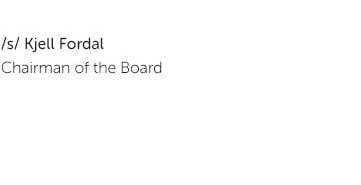

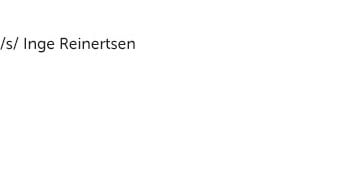

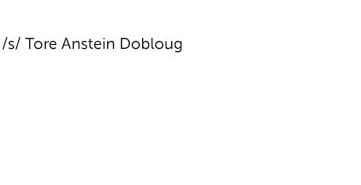



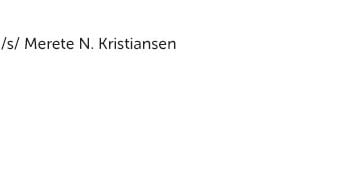

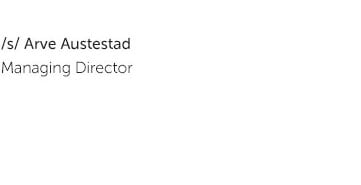
SpareBank 1 Boligkreditt AS
- Statement of the members of the board and the chief executive officer
The Board and the chief executive officer have today reviewed and approved the financial accounts for the first six months of 2016 for SpareBank 1 Boligkreditt AS. The accounts have been prepared in accordance with the International Reporting Standards (IFRS), as adopted by the EU.
To the best knowledge of the board and the chief executive officer the accounts have been prepared in accordance with applicable accounting standards and give a true and fair view of the assets, liabilities, financial position and profit or loss of the company taken as a whole as of June 30, 2016.
The board of directors and the chief executive officer declare to the best of their knowledge that the annual report gives a true and fair view of the development and performance of the business of the Company, as well as a description of the principal risks and uncertainties facing the Company.
Stavanger June 30, 2016 / August 5, 2016
The Board of Directors of Sparebank 1 Boligkreditt AS
